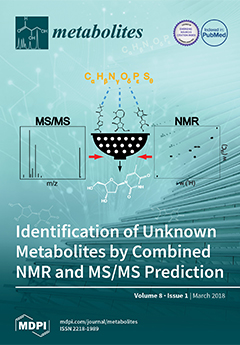Currently, changes in metabolic fluxes following consumption of stable isotope-enriched foods are usually limited to the analysis of postprandial kinetics of glucose. Kinetic information on a larger diversity of metabolites is often lacking, mainly due to the marginal percentage of fully isotopically enriched
[...] Read more.
Currently, changes in metabolic fluxes following consumption of stable isotope-enriched foods are usually limited to the analysis of postprandial kinetics of glucose. Kinetic information on a larger diversity of metabolites is often lacking, mainly due to the marginal percentage of fully isotopically enriched plant material in the administered food product, and hence, an even weaker
13C enrichment in downstream plasma metabolites. Therefore, we developed an analytical workflow to determine weak
13C enrichments of diverse plasma metabolites with conventional gas chromatography-mass spectrometry (GC-MS). The limit of quantification was increased by optimizing (1) the metabolite extraction from plasma, (2) the GC-MS measurement, and (3) most importantly, the computational data processing. We applied our workflow to study the catabolic dynamics of
13C-enriched wheat bread in three human subjects. For that purpose, we collected time-resolved human plasma samples at 16 timepoints after the consumption of
13C-labeled bread and quantified
13C enrichment of 12 metabolites (glucose, lactate, alanine, glycine, serine, citrate, glutamate, glutamine, valine, isoleucine, tyrosine, and threonine). Based on isotopomer specific analysis, we were able to distinguish catabolic profiles of starch and protein hydrolysis. More generally, our study highlights that conventional GC-MS equipment is sufficient to detect isotope traces below 1% if an appropriate data processing is integrated.
Full article






